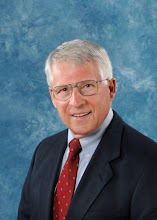Here are other colleagues’ ideas on what we have learned in our early months of working with our partner communities.
Dr. John Plodinec, Senior Science Advisor at Savannah River National Laboratory and a critical part of the CARRI Charleston/Low Country Team has suggested these – I have paraphrased just a bit:
We have learned over and over again the importance of planning and practicing the plans. It is perhaps the best way to engage the "unofficial" sectors. It is also the only way that a community can learn - prior to a catastrophe - how to deal with the unexpected.
Although we may not yet be able to quantify it, leadership stands out as a key component to resilience. Without effective leadership, a community is just another city slouching towards Katrina, and waiting to be reborn.
Communication (in it broadest sense) also stands out as a key component of resilience. If communications only occur within stovepipes, the community's ability to deal with the unexpected is limited.
Perhaps the real promise of CARRI is that we can help communities understand themselves and thus begin to predict how far, how fast, and how well they will recover in the face of disaster. Certification if we are able to accomplish it will be the icing on the cake based on the success of the community’s actions.
Dr. Andy Felts, Director of the Joseph P. Riley Center for Urban Affairs and Policy Studies of the College of Charleston and another vital member of the Charleston/Low Country Team has suggested these lessons:
We have learned that there is widespread agreement that we have not used the Non-governmental Organizations (including faith-based organizations nearly enough in response and recovery -- they remain a much untapped resource).
A resilient community probably should not struggle to get back to what was defined as 'normal' before the disaster. The disaster presents opportunities for adaptation that should be capitalized upon. These should be thought through carefully since they may present some controversy or issues post-disaster. A shorter way of saying this is why do we keep rebuilding those houses in those flood plains?
Community resilience involves not just economic resources, but social ones as well. Many communities have demonstrated that strong social bonds (social capital) give them more resilience than many might expect.
It would be very interesting to hear ideas from outside of the CARRI team on what resilience lessons are being learned in communities.
Monday, March 16, 2009
Subscribe to:
Post Comments (Atom)

No comments:
Post a Comment